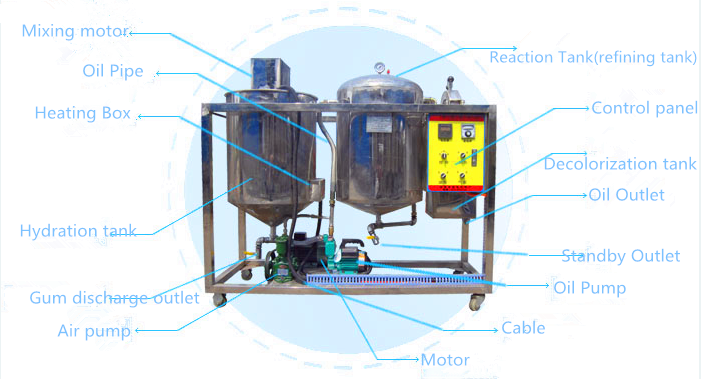Oil refining and deodorization In any case, the loss caused by distillation depends on the deodorization time, aeration rate, operating pressure and temperature, the content of free fatty acids and unsaponifiables in the oil, and the composition of fatty acid triglycerides. In the process of stripping and deodorization, a considerable amount of fat is lost due to splashing in the stripping steam. Therefore, the total loss of deodorization includes distillation loss and splash loss. Different grease, equipment and different operating conditions have different total deodorization losses.

In the process of steam stripping and deodorization, low-molecular aldehydes, ketones and free fatty acids are easily distilled out. With the deepening of the deodorization process, the original free fatty acids in the oil are almost completely removed after deodorization, so the distillation loss hardly includes the oil before deodorization. The content of free fatty acids. In addition, according to the reaction equation, the stripping steam will inevitably cause the hydrolysis of some fats and oils, and this part of the fatty acids generated by the hydrolysis of fats and oils also constitutes distillation losses. According to experience, when the free fatty acid content is reduced to 0.015%-0.03%, the removal rate of free fatty acids and the rate of cracking formation will reach equilibrium.
Distillation loss also includes sterols and other unsaponifiables in oils and fats. Although these substances are more difficult to volatilize than free fatty acids, they account for a certain proportion of deodorized distillates. The distillation loss they constitute depends on the deodorizing operating conditions. Taking soybean oil as an example, at a higher deodorization temperature, the removal rate of sterols and unsaponifiables by distillation is about 60%, while the removal rate is lower under normal operating conditions.
